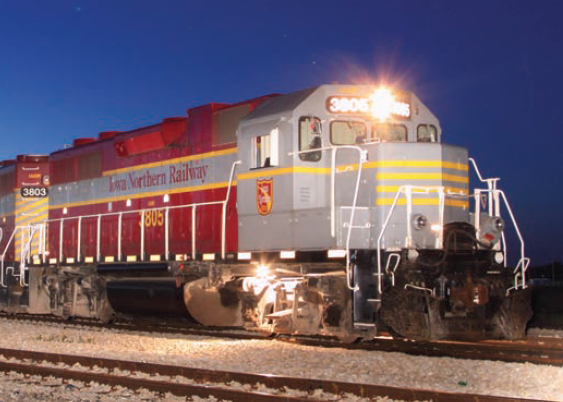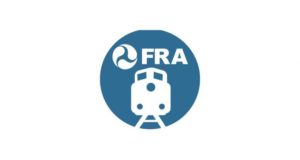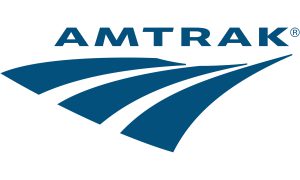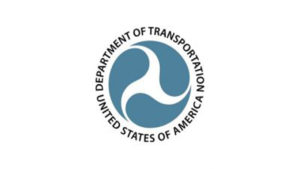Commentary: State and Federal Government: Get Your Act Together on Short Lines
Written by David C. Lester, Editor-in-Chief
RT&S JULY 2023 ISSUE – The short line industry is being battered about these days by proposed federal legislation that is slow to move and overly aggressive state legislation that borders on being laughable.
I’m talking, of course, about the proposed Short Line Railroad Relief Act sitting in the U.S. Congress and the California Air Resources Board’s proposed In-Use Locomotive Rule.
Readers will recall that the Short Line Railroad Relief Act largely stems from Hurricane Ian’s destruction on the Seminole Gulf Railway less than a year ago. After this storm devastated most of this railroad, it raised concern about the lack of federal disaster relief available for short lines. States certainly can’t take this on by themselves, and Congressman Byron Donalds (R-Fla.) introduced legislation in the last Congress and the current one to make federal dollars available to help short lines recover from natural disasters. Congressman recently stated in a press release that “When a storm of this magnitude hits any area of our nation, it is the federal government’s responsibility to make available the necessary resources to rebuild and restore vital components of a community. As Hurricane Season 2023 begins, we must establish a means by which America’s short line railroads can receive critical relief after natural disasters.”
American Short Line and Regional Railroad Association President and CEO Chuck Baker recently added that “In the event of a natural disaster, short line railroads can play a critical recovery role, moving relief goods in and debris of all kinds out, yet no significant federal disaster relief options are available to them beyond small loans.” Baker went on to say that “The Short Line Railroad Relief Act would provide parity across transportation modes, allowing for immediate deployment of grant funding to short line railroads, enabling them to turn their attention to rebuilding the local economy, particularly crucial in the small town and rural communities that we serve. Representative Donalds jumped into action by the devastation to the Seminole Gulf Railway in his district caused by Hurricane Ian last year. The concern, however, is applicable nationwide, resulting in Congressional support throughout the country for this effort. We applaud each of the cosponsoring members of Congress for their leadership.” Baker’s point on the critical recovery role short line railroads can play echoed in an interview I had last year with Robert Fay, Vice President of Seminole Gulf, where he said that in Florida’s numerous
hurricanes, floods, and other disasters, his railroad has usually been a critical part of the recovery, not the object of devastation.
Just before press time, I spoke again with Robert Fay at the Seminole Gulf. He reported that he and others had spent time in Washington lobbying Congress to pass The Short Line Railroad Relief Act. Over the past several months, Fay’s team has managed to repair one of their major bridges lost in the hurricane and replace 40 miles of track, but they had to obtain private bank loans to fund the work. The restoration of this portion of his line has allowed the Seminole Gulf to resume service to six customers, and Fay has attracted some new customers to his line. Railway Track & Structures has reported on this legislation and its circumstances, and we will continue to do so.
On the other side of the country, we now have the California Air Resources Board (CARB) taking us from the sublime (if the relief act becomes law) to the absurd. This agency has mandated that locomotive operators in California must begin paying into a spending account beginning in October of this year, and the emissions their locomotives create while running in California will determine the amount they must pay. This mandate is called the “In-Use Locomotive Rule.” Companies can use the funds to upgrade to cleaner locomotive technologies, and the rule also stipulates that locomotives will have a 30-minute idling limit. Additionally, switch, industrial, and passenger locomotives built in 2030 or after will be required to operate in zero-emissions configurations in California and 2035 for freight line haul.
Make no mistake – I am as concerned about the environment as anyone is. Melting ice caps, wildfires, massive hurricanes, and other violent weather caused by global warming demand society’s most serious attention. However, forcing short line railroads, many of which face revenue and traffic challenges, to begin paying into an emissions technology fund on such short notice is ridiculous.
The Association of American Railroads and the American Short Line & Regional Railroad Association have filed a lawsuit in the Eastern District of California and “argue that CARB lacks the legal authority to promulgate the In-Use Locomotive Rule. Due to the interconnected nature of rail operations and the need for uniform regulatory policies, Congress, the courts, federal regulators, and even CARB itself have long acknowledged that the federal government has exclusive authority to regulate rail operations.” Ian Jefferies, the President and CEO of the AAR, said [w]hile the urgency to act is real and unquestionable, CARB uses unreasonable, flawed assumptions to support a rule that will not result in emissions reductions. Railroads have urged CARB to take the proven path of collaboration and build on our shared successes, but those arguments were rejected out of hand. Railroads are working toward reliable, efficient zero-emissions technologies; however, they cannot simply be willed into immediate existence by policymakers.” The AAR and ASLRRA also point out that zero-emissions technology “has not been sufficiently tested in prototype or operational service and is not commercially available on the market today.” They also point out that “a clear technological path has not yet emerged.”
Railroads are already the most fuel-efficient form of land transportation. Moreover, the industry, according to the AAR and ASLRRA, has initiatives underway, such as zero-emissions cranes, yard service vehicles, and other technology at work in California and the nation, such as anti-idling systems and fuel management systems, which are reducing locomotive emissions. Additionally, the industry is testing technologies such as battery-electric, hydrogen fuel cell power, and renewable fuels.
ASLRRA’s Baker said that “[w]hile the spirit behind this regulation is consistent with the railroads’ environmental commitment . . . [this rule] would literally bankrupt some small business short lines.”




